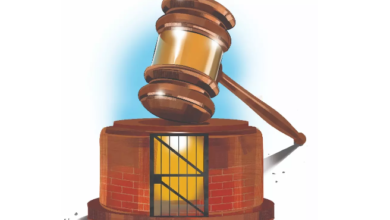NYS Penal Law Criminal Mischief: What You Need To Know

Navigating the complexities of NYS Penal law criminal Mischief can feel like a daunting task, especially understanding criminal offenses. One area that often raises questions is criminal mischief. Whether it’s a minor act of vandalism or something more severe, knowing what constitutes criminal mischief under NYS law is crucial for anyone living in or visiting the state. This blog post will break down everything you need to know about this offense, helping you grasp its nuances and implications clearly. Let’s dive into the world of NYS penal law and shed some light on criminal mischief!
What is Criminal Mischief?
Criminal mischief refers to the intentional destruction or tampering of someone else’s property. This offense can range from minor vandalism, like spray painting a wall, to severe acts that cause significant damage.
The key element is intent. A person must deliberately act in a way that harms another’s belongings. Negligence doesn’t fall under this category; it’s all about purposeful actions.
In New York, criminal mischief laws are designed to protect property rights and maintain public order. The law recognizes various degrees of severity based on the extent of damage caused.
Different scenarios could lead to charges—everything from breaking windows to altering digital data on someone else’s device qualifies as criminal mischief if done with intent. Understanding these nuances is crucial for anyone facing potential allegations in New York State.
Types of Criminal Mischief Offenses in New York
New York law identifies various types of criminal mischief, each with distinct characteristics. Understanding these classifications is essential for anyone facing charges.
One common offense involves intentionally damaging property. This can range from graffiti on a wall to breaking windows. The intent behind the action often plays a critical role in defining the severity of the charge.
Another type includes tampering with someone else’s possessions. For instance, altering or destroying a neighbor’s belongings without consent falls under this category.
There’s also aggravated criminal mischief, which occurs when damage is done using dangerous weapons or causes significant harm to individuals or property values exceeding certain thresholds.
Each type carries its own legal implications and potential consequences, making it vital for those accused to seek knowledgeable legal counsel tailored to their specific situation.
Penalties for Criminal Mischief in New York
In New York, penalties for criminal mischief vary based on the severity of the offense. It can range from a misdemeanor to a felony charge.
For instance, if someone intentionally damages property worth less than $250, they may face a Class A misdemeanor. This could result in up to one year in jail and fines.
However, if the damage exceeds that amount or involves more severe circumstances—like using explosives—the charge escalates to a felony. Consequences can include several years of imprisonment and hefty fines.
Judges often consider factors such as prior convictions and intent when determining sentences. Community service or probation might be alternatives for lesser offenses.
Understanding these potential repercussions is crucial for anyone facing charges under NYS penal law regarding criminal mischief. The legal landscape is complex and can have lasting impacts on one’s life.
Possible Defenses for Criminal Mischief Charges
When facing charges of criminal mischief, individuals may explore various defenses. One common defense is the claim of lack of intent. If the accused can demonstrate that their actions were unintentional or accidental, it could lead to a dismissal.
Another potential avenue for defense is consent. If the property owner permitted the actions that resulted in damage, this might negate liability for criminal mischief.
Additionally, asserting self-defense can be effective in specific scenarios. If a person damaged property to protect themselves from imminent harm, they may justify their actions legally.
Mistaken identity also plays a crucial role in defending against these charges. Establishing an alibi or proving someone else committed the act can undermine the prosecution’s case significantly.
Each situation is unique and requires careful evaluation by legal experts familiar with New York State law.
Recent Changes to NYS Penal Law Regarding Criminal Mischief
Recent updates to the New York State Penal Law have brought significant changes to how criminal mischief is defined and prosecuted. Lawmakers are increasingly recognizing the impact of technology on vandalism and property damage.
One notable amendment addresses digital offenses, acknowledging that acts like hacking or damaging online content can now fall under criminal mischief. This shift reflects a broader understanding of crime in our technologically driven society.
Additionally, penalties have been adjusted for certain types of vandalism involving public or private property. Offenders may face harsher consequences when their actions target critical infrastructure or community spaces.
It’s important for individuals to stay informed about these legal developments. Understanding the nuances of these laws can help prevent unintentional violations and promote responsible behavior in both physical and digital realms.
Conclusion
Understanding New York State’s penal law regarding criminal mischief is vital for anyone living in or interacting with the state. The definition of criminal mischief may seem straightforward, but the nuances can create confusion. By familiarizing yourself with the various types of offenses and their associated penalties, you empower yourself to navigate potential legal troubles more effectively.
Being informed is key when it comes to navigating complex legal landscapes like NYS Penal Law concerning criminal mischief. Whether you’re a resident, a visitor, or someone seeking knowledge about this subject, it’s essential to remain proactive and engaged with the laws governing our communities.



